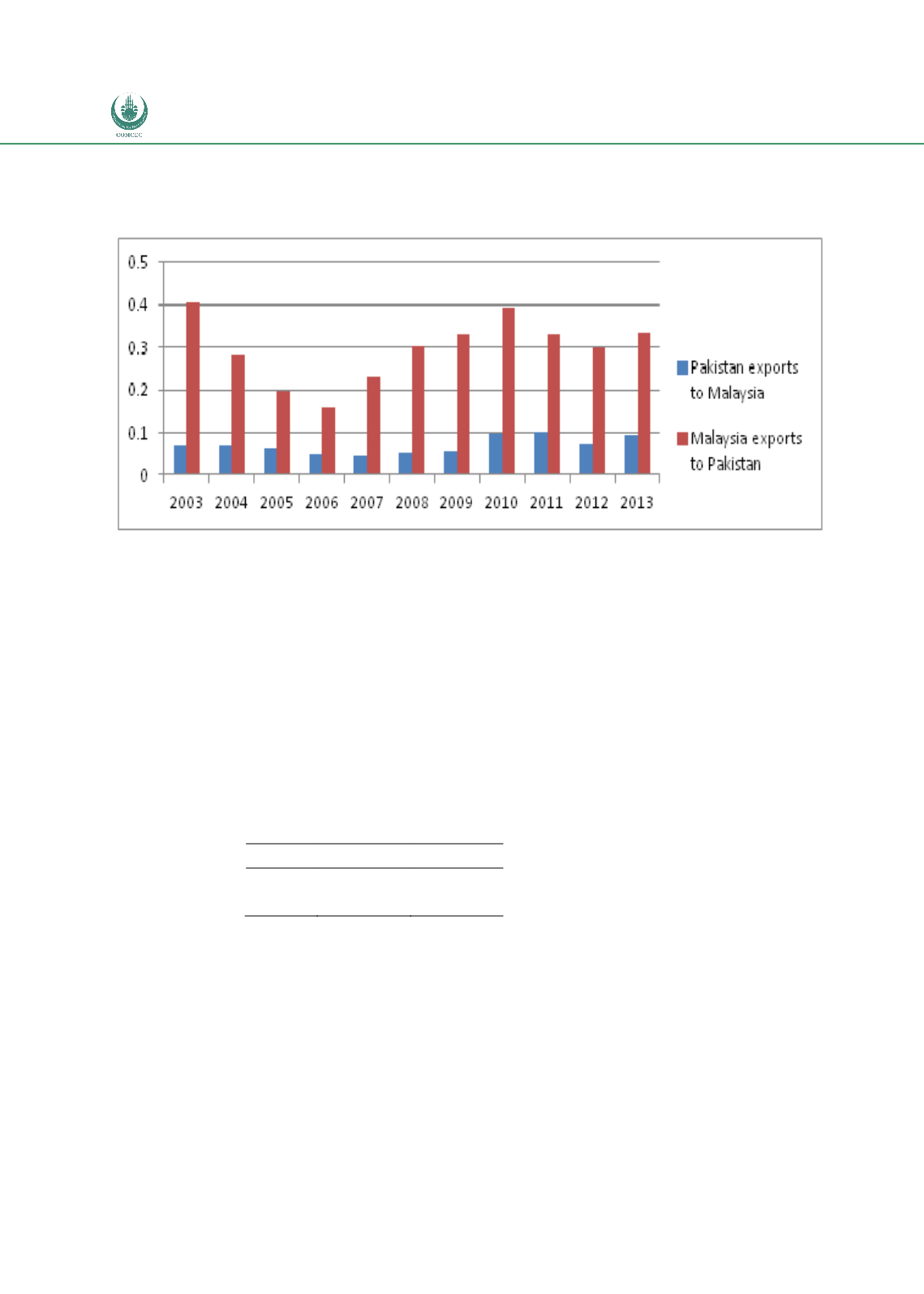

Preferential Trade Agreements and Trade Liberalization Efforts in the OIC Member States
With Special Emphasis on the TPS-OIC
136
Figure 58:
Concentration of Bilateral Exports Between Pakistan and Malaysia, 2003-13
(higher values indicate more concentrated trade)
Calculations based on Comtrade data
The agreement’s chapters on technical barriers to trade and on sanitary and phyto-sanitary
issues contain provisions declaring co-operation in these two areas, in particular through
establishment of focal points. The agreement also covers trade in services and commitments
go beyond those under GATS. Pakistan offered maximum foreign equity participation of 60%
in all sectors with no limits set on the number of Malaysian employed per organization. A
Framework on Mutual Recognition Arrangement helps suppliers of professional services move
between the two countries (WTO, 2009a).
Table 25:
Pakistan and Malaysia Services Commitments in MPCEPA Compared to
GATS/DDA (higher value implies more service commitments)
Malaysia Pakistan
GATS
27.47
20.24
PTA
31.57
31.38
Note: The index score is on a scale of 0 to 100 for each sector, with 100 representing full commitments across all
relevant sub-sectors. "GATS" reflects the index value for both GATS commitments and services offer in the ongoing
Doha Development Agenda. The index value is for both mode 1 (cross-border trade) and mode 3 (commercial
presence). Source: WTO Dataset of services commitments in regional trade agreements (RTAs);
http://www.wto.org/english/tratop_e/serv_e/dataset_e/dataset_e.htmWAEMU
The West African Economic and Monetary Union agreement was signed in 1994. The original
signatories were: Benin, Burkina Faso, Côte d’Ivoire, Mali, Niger, Senegal and Togo were later
joined by Guinea Bissau. WAEMU members also belong to a wider regional country group

















